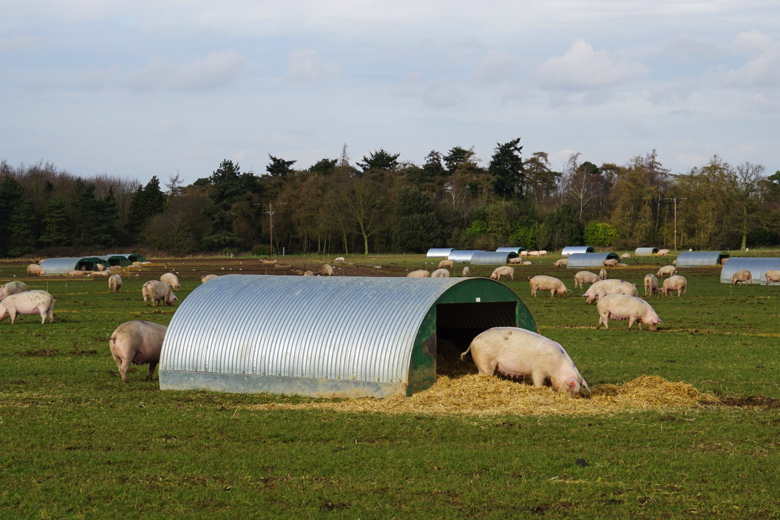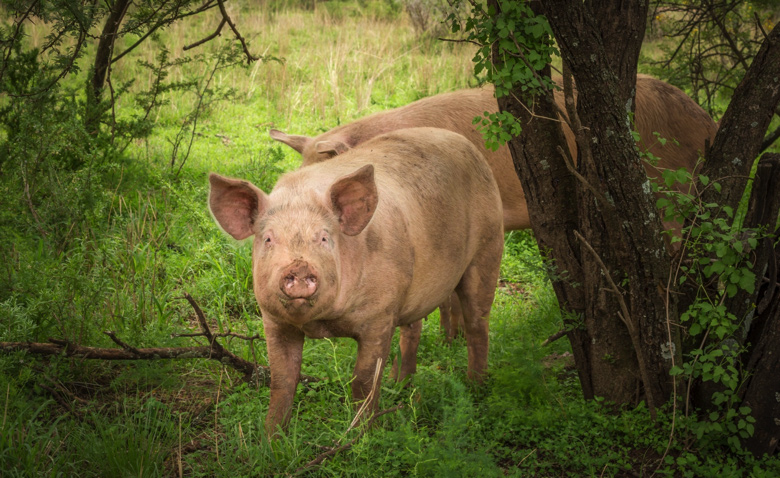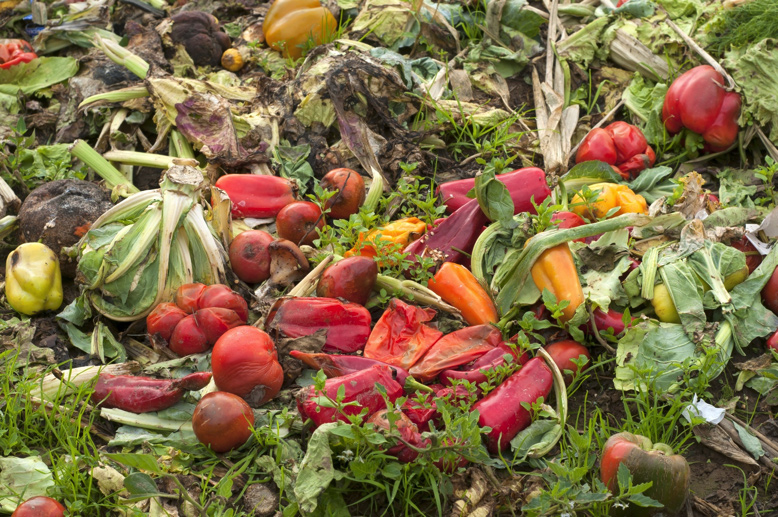
Pork is the most consumed animal protein globally at 39.8 percent, driven in part by the influence of Asian cuisine, a taste for bacon and the popularity of pork and bacon breakfast items at fast food restaurants.
Pig farmers know they must produce food in a way that satisfies demand while respecting the environment and the community in which they live. But how do they produce eco-friendly and cost-efficient pork?
Some commercial pork producers consider strategies to upscale sustainable pig farming practices too costly, but sustainable farming is effective and successful. Modern farmers recognize that viable conservation practices are critical to long-term sustainability.
One of the most significant cost efficiency hurdles in pig farming is livestock feed. The cost of feeding livestock accounts for approximately 60-70 percent of total production cost.
Soy, corn, and wheat are the predominant grains used in livestock feed. Unfortunately, due to global demands, weather and political climates, these grains are often subject to economic volatility. These variables can significantly affect the cost of pig production and, consequently, the price of pork for the consumer.
Additionally, due to the high demand for these feed products, there has been an increase in the volume of production, causing severe environmental damage to delicate ecosystems, such as the Amazon rainforest.
Another serious issue that arises with livestock nutrition is the addition of antibiotics to feed. The presence of excrement in holding pens, noxious gases, and close confinement leave pig herds vulnerable to disease.
The addition of antibiotics to feed has been standard practice in commercial pig farming for decades. However, studies have shown the microorganisms targeted by these antibiotics are becoming resistant, which can have a significant impact on the future health of the herds, and may end up being less cost efficient for producers if their herds become ill.
A way to alleviate the problems associated with disease-carrying pig waste products is to use scientifically formulated treatments for swine confinements, such as EnviroSEB Hog, which use enzymes, microbes, and natural plant products to eliminate waste. They can reduce the need for antibiotic-laden feeds and pave the way for more sustainable nutrition sources.
To find a solution to some of the problems with commercial livestock nutrition, researchers have investigated alternative methods of growing livestock feed. Here are some of the options that may offer a more sustainable and cost-effective model for livestock feed production.
While adding enzyme-based additives to waste lagoons and swine confinements can reduce some of the health issues associated with commercial pig farms, waste products can still hurt the environment due to the high levels of phosphorus and nitrogen present in the manure.
However, studies in pig manure filtration suggest that adequately filtered manure can be safely reincorporated into the soil, providing an inexpensive and sustainable means for farms to reuse pig waste to produce livestock feed.
This model may not be suitable for all farms because many do not grow their own grain. Also, it is currently less expensive to buy feed produced offshore, but with the rising cost of soya, it may become financially viable in the future.
Pigs are naturally omnivorous foragers, meaning they can digest a wide range of foodstuffs, including fibrous plant matter. The fiber in these plants helps maintain gut health, unlike traditional feeds which have been linked with ulceration.
The drawback to this model is a lack of land to allow pigs to forage naturally. For small-scale free-range farms, this practice has been implemented with great success but also carries a higher price tag for the consumer. An alternative to free foraging is to feed the herds forage legumes, such as Lucerne, rather than commercial livestock feed to encourage foraging behavior.

Soy is currently the primary source of protein used to feed pigs worldwide due to its easy digestibility and high nutritional value. However, soybean farming has a devastating environmental impact because it threatens biodiversity, endangers species, creates soil erosion and causes climate change through deforestation.
Research into alternative protein sources has yielded a selection of sustainable alternatives to soya, including sunflowers seed meal, rapeseed meal, peas, and fava beans. All these crops can be homegrown, which reduces the cost of feeding the herd without negatively influencing the quality of the meat, the welfare of the animals or the environment.
An enzyme product like DigeGrain Delta can also provide a good source of protein without relying on soybeans.
Recycling the by-products of other organic farming endeavors has been a practice in organic farming for many years. However, using recycled foodstuffs as pig feed, termed “swill,” has been heavily regulated worldwide after the foot and mouth disease outbreak in Europe.
Currently, former food products can be turned into livestock feed, provided they do not contain any meat products, which can have consequences along the food chain and were responsible for the initial outbreak of foot and mouth disease. Farmers can legally feed their pigs leftover stale bread from bakeries, whey from milk production, as well as non-standard fruits and vegetables. However, only a fraction of leftover foodstuffs is turned into livestock feed, which reduces the overall cost efficiency of the process.
Using food by-products as feed is a sustainable way to provide adequate nutrition and limit the use of grain crops that are environmentally damaging. Moreover, feed produced from food by-products is more cost-efficient for farmers. However, for this option to become a reliable source of feed, better quality control must be implemented to eliminate the possibility of another outbreak of illness that can decimate crops and damage the pork industry.

The most sustainable model of pig farming is to downscale production to smaller farms to focus on raising fewer animals in larger spaces and provide farmers with the space to grow their own livestock feeds. This also allows for the possibility for forage feeding.
The biggest hurdle to implementing a sustainable farming model is balancing eco-friendly methods with cost-effective practices, while still meeting demand. The only way for sustainable livestock production to be effective is if it is cost-efficient. Consumers are hesitant to pay higher prices for pork, but to affect impactful change, the pork industry needs to change consumer attitudes by demonstrating a commitment to eco-friendly farming practices.
 About the Author:
About the Author:
Stacey Gavin is a wellness expert who studies the use of enzymes to improve health and wellbeing. That interest led her to explore how we can improve the health of farm animals and improve our diets. She works for Enzyme Innovation helping farms of all sizes produce the healthiest products possible. Contact: staceygwellness4@gmail.com
Scott Ellyson, CEO of East West Manufacturing, brings decades of global manufacturing and supply chain leadership to the conversation. In this episode, he shares practical insights on scaling operations, navigating complexity, and building resilient manufacturing networks in an increasingly connected world.